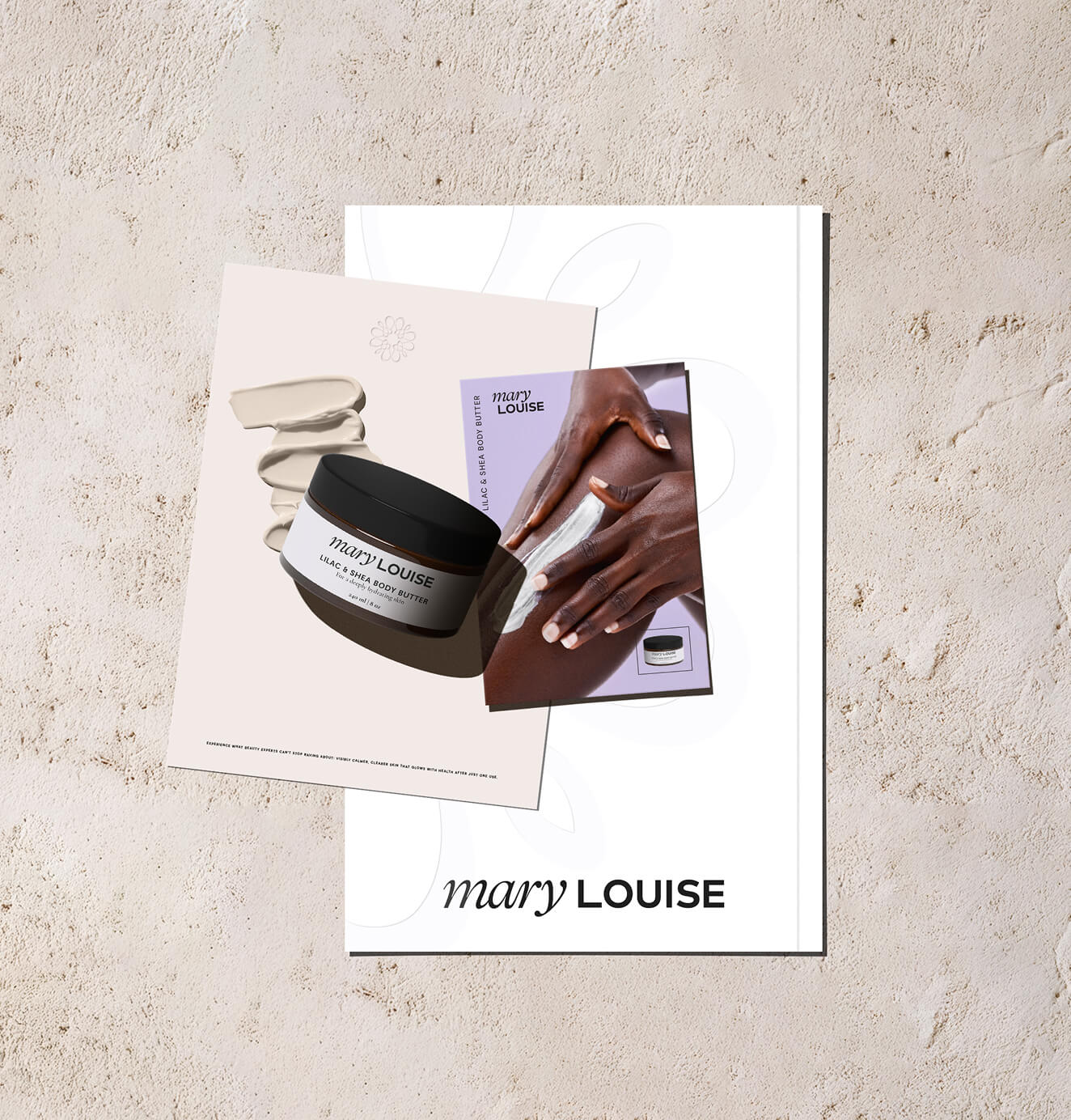Building Your Business in Canada
08/05/2025
Business / International Marketing
Starting a business in Canada? Here’s your guide to navigating the market, building a solid foundation, and setting your brand up for success.

Starting a business in Canada is easier than you might think. There are many different resources available to help you make your business a success, from financial support and training programs to networking opportunities and mentorship services.
.png)


Starting a Business in Canada



In this article, we’ll take you through step by step on how to build, launch and grow a business in Canada.
Here are a few quick tips:
1. Research the Market: The first step in starting a business in Canada is to research the market and understand what potential customers want or need. Make sure your product or service offers something that isn't already being offered, and ensure there’s a demand for it.
2. Business Plan: Every successful business starts with a plan. Map out your strategy for the next few years and lay out a timeline of steps you need to take to get there. This includes budgeting, setting goals, identifying resources, and more.
3. Financing: Financing is an important part of starting any business in Canada. You’ll need to look into funding options such as grants, loans, and other sources of income.
4. Business Registration: You’ll need to register your business with the government in order to legally operate. This involves registering with both federal and provincial/territorial governments, depending on where you live.
5. Hiring Employees: Once your business is registered, the next step is to start thinking about hiring staff. Make sure you’re aware of all relevant employment laws and regulations in regards to employee rights, wages, and other considerations.
6. Taxes: When running a business in Canada, it’s important to be aware of your tax obligations. This includes filing corporate income taxes, GST/HST, and other sales taxes.
7. Marketing: Last but not least, you’ll need to start thinking about ways to market your product or service. Get creative with ways to reach potential customers, from online advertising and social media campaigns to more traditional tactics such as print ads and flyers.
8. Business Growth: Once your business is up and running, the next step is to start thinking about how to take it to the next level. Focus on building relationships with existing customers, look for ways to expand into new markets, and explore potential partnerships or investments.
Starting a business in Canada is an exciting prospect, but it does require some careful planning and preparation.
Keep reading for our step by step guide to starting and growing a business in Canada.
If you need help with your branding and marketing, consider hiring us here at The Branded Agency we are a team of dedicated professionals who specialize in creating stunning designs and powerful marketing campaigns. Contact us today to get started!
Striking Sparks With Your Business Idea
As a small business owner, it's important to outline your new business idea, the products or services you'll provide, and how you plan to market and brand your offerings.
Having a clear vision for your company is key to establishing your competitive edge in the market, so spend some time really thinking about what makes your business unique and how you can differentiate yourself from the competition.
Small businesses often fail because they don’t have products or services that customers need, and they don't have strong marketing and branding strategies in place.
Once you have a business idea that you’re confident will stand out in the market, it’s time to start taking action.
Market Research and Target Audiences
Once you have a solid business idea in place, it’s time to do some market research. Start with a simple Google search to see what's already out in the market and what people are looking for in their online searches.
Consider, too, getting to the heart of the matter by conducting surveys and interviews with potential customers or clients, as well as researching trends in your industry to help you understand what products or services people are looking for and how they like to shop.
Do secondary research and analyze the demographics, psychographics, interests and behaviours of your target audience. Be sure to learn your audience's psychological drivers and motivators when they consider purchasing an item.
Market Research and Competing Brands
Identify your competitors, both direct and indirect, and do a SWOT analysis of each competitor. A SWOT analysis is a great way to identify strengths, weaknesses, opportunities and threats that your competitors may have.
With the information about competing brands in hand, create positioning maps to identify and analyze the opportunities in your industry. To create a positioning map, you will identify the features and benefits of each competing brand, then rate your own brand's strengths in comparison to your competitor's weaknesses.
Choosing a Business Name
Coming up with a memorable and appropriate business name requires some creativity and strategic thinking.
The process of creating a business name is similar to naming a baby – you have to be open to possibilities and willing to consider all kinds of options, as well as the opinions of others.
When thinking about your business name, it’s important to keep in mind factors like legal restrictions, existing trademarks, and whether or not the name is available in your province or territory.
Consider, too, if there is an intuitive web address available that reflects your chosen business name. While the suffix '.com' is universal, Canadian businesses also have the option of choosing '.ca' for the website URL. Choosing the latter signifies your product or service is Canadian.
Next, look to social media platforms to confirm an intuitive profile name is available. In regard to intuitive address, an example may be if your business idea is to sell personalized mugs. If you chose the business name 'Canadian Personalized Mugs,' an intuitive web address may be personalizedmugs.ca, and you would try to choose a social media handle that also reflected that, like www.facebook.com/personalizedmugs.
Once you have chosen your business name, make sure to register it with your local government office so that your legal rights to the name are protected.
Developing Your Business Plan












Creating a business plan is likely going to be one of the hardest things you'll ever have to do. A business plan should include a detailed description of your business, including information about your products or services, marketing and branding strategies, legal structure, business structure and financial projections.
Cashflow forecasts, income and expenditure projections, sales targets and other key performance indicators are all important to include in your business plan.
Developing a business plan for your business will be beneficial to maintain efficient business operations as well as attracting potential investors or pitching for venture capital.
Branding
Branding involves developing a clear and consistent identity for your business that reflects your values, goals, and mission. This includes choosing a name, logo, colours, fonts, and design elements that are aligned with your target audience and industry.
When done correctly, branding can help you stand out from the competition, increase brand recognition among your target audience, and build trust and credibility in your business.
To get started with branding your business, you will need to do research on your ideal customer and competition. You will need to create a brand identity that resonates with your target audience, create marketing materials that reflect this identity, and consistently implement these elements across all channels.
With the right tools and support, you can successfully build a strong brand that will help your business stand out and succeed in today's competitive marketplace.
Marketing Strategy
Once your business is up and running, it’s important to develop a marketing strategy that will help you gain traction in the market.
This involves identifying your target audience, creating content that resonates with them, and promoting yourself through paid advertising and social media platforms.
You may also want to consider partnering with influencers or other businesses to help grow your brand and increase visibility.
Another important thing to remember is that marketing is a continuous process. You will need to constantly be evaluating your marketing efforts, making tweaks and changes as needed in order to stay competitive and relevant in the market.
Marketing Plan
Once you have a marketing strategy in place, it’s important to create a detailed marketing plan that outlines all of your upcoming marketing activities. Marketing plan differs from a marketing strategy in that the first explains the how while the latter, the strategy, explains the why.
Your marketing plan should include
- tools,
- tactics,
- a timeline,
- budget, and
- the specific goals or objectives that you want to accomplish.
Financial Plan
Your financial plan should include sales forecasting, projections, cash flow, taxes, legal considerations, income tax and any other financial factors that may impact your business.
Business financing options are also an important part of your financial plan, as you may need to seek outside funding in order to get your business off the ground.
There are a number of different funding sources available – such as personal or business loans, venture capital or crowdfunding – so it’s important to do some research and carefully weigh the pros and cons of each option before deciding which one is best for you.
Venture Capital, angel investors, and crowdfunding platforms have become increasingly popular in recent years as more and more entrepreneurs are looking to get their businesses off the ground.
Business banking services and business loan options are also readily available to help you get the capital you need to grow your business. Separate Business bank account, merchant account, and overdraft protection.
Tax deductions, tax obligations, legal fees, small business loans startup costs and legal considerations are also important to keep in mind.
Whatever financing option you choose, make sure to do your research and carefully plan out every step of the process so that you can avoid potential roadblocks down the line.
Want to learn more about brand platforms, Brand Strategy and Brand Identity? Keep reading!
If you need help with your companies brand strategy and identity, contact us for a free custom quote.
Legal Requirements

You are probably wondering what are all the legal requirements to start a business in Canada, right? In order to start a business in Canada, you will need to understand and comply with the legal requirements that are specific to your business type.
There are three main structures for your business:
- Sole Proprietorship - applicable when you are the only business owner, this is the simplest legal structure for a business, as it requires minimal paperwork and legal fees, and taxes are reported on your personal return.
- Limited Liability - whether you are the only owner or have partners, this structure separates the business from your personal, limiting liability to the business entity.
- Corporation - legal structure is best suited for larger businesses with multiple owners and needs to be registered at the federal level.
It is essential that you consult with a legal professional who can help you understand the various legal requirements and ensure that you are complying with all Canadian legal obligations.
Business License
One of the legal requirements that you will need to consider when starting a business in Canada is obtaining a business license or permit.
In order for your business to operate legally and lawfully, you may need to obtain a license from your local municipality, depending on the type and scope of your business activities.
The legal requirements for obtaining a business license will vary depending on the industry and location of your business, so it's important to work with a legal professional who can help guide you through the process and ensure that you are meeting all legal requirements.
Business Insurance
In addition to legal requirements, you will also need to consider the various business insurance options that are available for your company.
Business insurance can provide valuable protection and peace of mind if you ever experience damage or loss due to unforeseen circumstances.
Whether you need general liability coverage, property insurance, professional errors & omissions (E&O), or some other type of business insurance, it's important to choose a policy that fits your specific needs and budget.
Business Structure
A business structure is a legal framework that defines how your business operates and interacts with various stakeholders, such as customers, suppliers, employees, and shareholders.
Choosing the right legal structure for your business can have a significant impact on both your day-to-day operations and long-term success.
There are a number of factors that should be considered when choosing a legal structure, including legal requirements, tax implications, liability protection, and potential growth and expansion opportunities.
Partnership agreements, shareholder agreements, and operating agreements are legal documents that can help define the structure of your business and outline the terms and conditions under which your company will operate.
Business Registration
The process of registering a business in Canada can vary depending on the legal structure chosen and your specific location.
Typically, this involves filing business registration documents with your local authority, such as a provincial or municipal government licensing office.
Trademark Registration
You can trademark your business and brand name, logo and other elements of your brand.
This helps protect your brand and intellectual property from legal challenges and ensures that you and your are the only ones with the legal rights to use these elements in your business.
To get started with trademark registration, the first step is to conduct a comprehensive search to ensure that no one else has already registered your chosen name or logo. Once you have confirmed that there are no legal conflicts, you can register your trademark with the appropriate legal authority in Canada.
This typically involves filing a trademark application, paying a registration fee, and providing supporting documentation. With a legal trademark registered in your name, you can take legal action if someone tries to use or copy your brand without permission.
So if you're looking to protect your brand and intellectual property, investing in legal trademark registration will give you peace of mind and ensure legal rights to your business assets.
GST, PST, and HST Registration
If your business is based in Canada and makes over $30,000 in three consecutive quarters, it will be required to register for and collect GST/PST or HST from customers.
GST (Goods and Services Tax) is a sales tax typically charged at 5% of the retail price. It applies to most goods and services sold within Canada.
Depending on the province, businesses may also be required to collect and pay PST (Provincial Sales Tax) or HST (Harmonized Sales Tax).
To register for GST/PST/HST, you will need to complete a registration form and submit it to the appropriate legal authority in your province.
There are also various tax exemptions and credits available for businesses, so it is important to work with a professional accountant or tax advisor who can help you understand your legal obligations and ensure compliance with all GST/PST/HST requirements in Canada.
For more information on the Canadian regulations around starting your business and registering to collect sales tax, visit https://www.canada.ca/en/services/business/start.html.
Hiring Employees
The legal hiring process in Canada involves a number of steps to ensure compliance with legal requirements for employee management and termination.
These include:
- Determining legal minimum wage requirements based on your business location and industry.
- Ensuring that employees have access to workplace benefits such as health insurance, maternity leave, and vacation time.
- Navigating legal requirements for hiring, including verifying candidates' eligibility to work in Canada and completing applicable legal forms and documentation.
- Managing legal compliance requirements such as legal notice requirements in the event of employee termination or layoffs.
To help ensure legal compliance and smooth operations, it is a good idea to work with a professional legal advisor who can guide you through the various legal considerations and processes involved in hiring employees in Canada. With their support, you can be confident that your business is set up for success and that you have legal protections in place to manage your workforce effectively and efficiently.
Overall, there are many legal considerations when it comes to hiring employees in Canada. Whether you are looking to hire full-time staff or independent contractors, it is important to understand the legal requirements and processes involved so that you can start your business on a strong legal footing.
Employment Insurance
In addition to legal requirements for hiring and managing employees, Canadian businesses also need to comply with legal requirements related to employment insurance.
Employment Insurance, or EI, is a government program that provides financial benefits to individuals who are out of work due to job loss, illness, maternity leave, or other reasons.
As an employer in Canada, you will need to follow legal requirements and procedures for reporting and remitting contributions to EI.
If you have questions or concerns related to legal requirements around EI, it is important to work with a professional legal advisor who can help guide you through the process and ensure that your business is compliant with all legal obligations.
Business Incubators
If you are starting a business in Canada and looking for support, one option is to explore incubators.
Incubators are organizations that provide services, resources, and funding to help entrepreneurs get their businesses off the ground.
Some of the key benefits of business incubators include access to educational programs and workshops on starting a business. Other more advanced business incubators focus on business growth and fund development, with some offering specialized services and resources to help businesses scale up.
Conclusion

Get legal support, guidance with EI requirements, or assistance with starting and growing your business; consider working with a business incubator.
With the right tools and expertise, you can successfully build a brand that will help your business succeed in today's competitive marketplace.
So why wait? Start branding your business today with The Branded Agency.
An agency built for the new way of working.
The Branded Agency is the only cost-effective branding and marketing agency that's built for independent businesses so that you can reach your goals faster— all with a single agency partner.
Branding businesses that convert customers and scale
Drive more traffic and sales by building a brand that engages your customers and boosts your business long-term.
Effective branding builds customers for life, increases your marketing ROI and makes your business more valuable.
We make growing your business a whole lot easier.
We plan, build, and manage all aspects of our client's growth marketing campaigns.
With strategy baked in, there is never a hand-off between strategy and design.
Our agency model is designed to exceed your business objectives.
Experience the power of an entire team behind you.
We challenge the status quo of the "one size fits all" agency model.
The Branded acts as an extension of your in-house team. We're as nimble and efficient— but with a greater network effect.

Sloane Avery
As entrepreneurs, they’ve built and scaled their own ventures from zero to millions. They’ve been in the trenches, navigating the chaos of high-growth phases, making the hard calls, and learning firsthand what actually moves the needle. That’s what makes us different—we don’t just “consult,” we know what it takes because we’ve done it ourselves.
Want to learn more about brand platform?
If you need help with your companies brand strategy and identity, contact us for a free custom quote.
We do great work. And get great results.
+2.3xIncrease in revenue YoY
+126%Increase in repurchase rate YoY








+93%Revenue growth in first 90 days
+144% Increase in attributed revenue








+91%Increase in conversion rate
+46%Increase in AOV








+200%Increase in conversion rate
+688%Increase in attributed revenue












